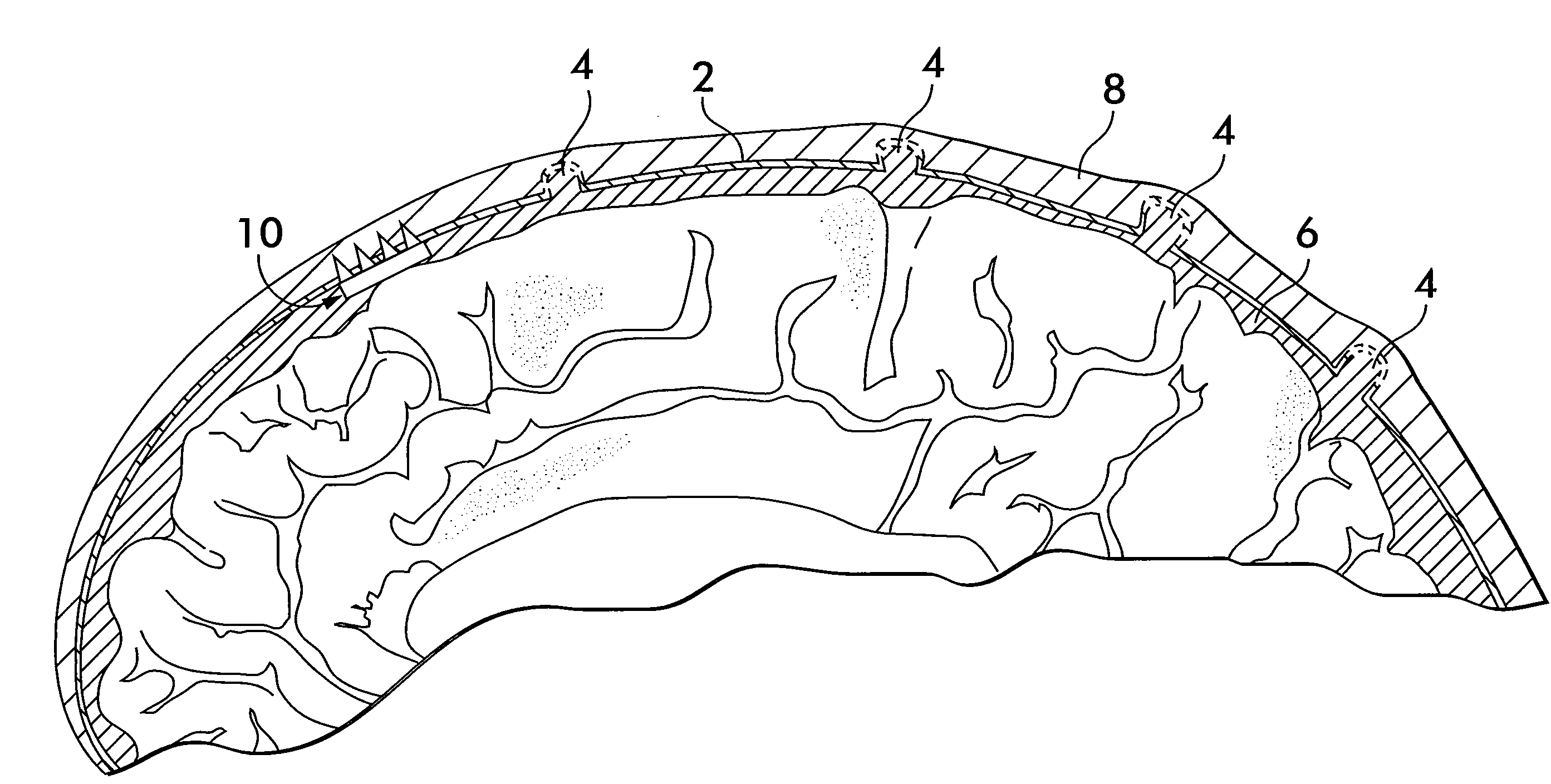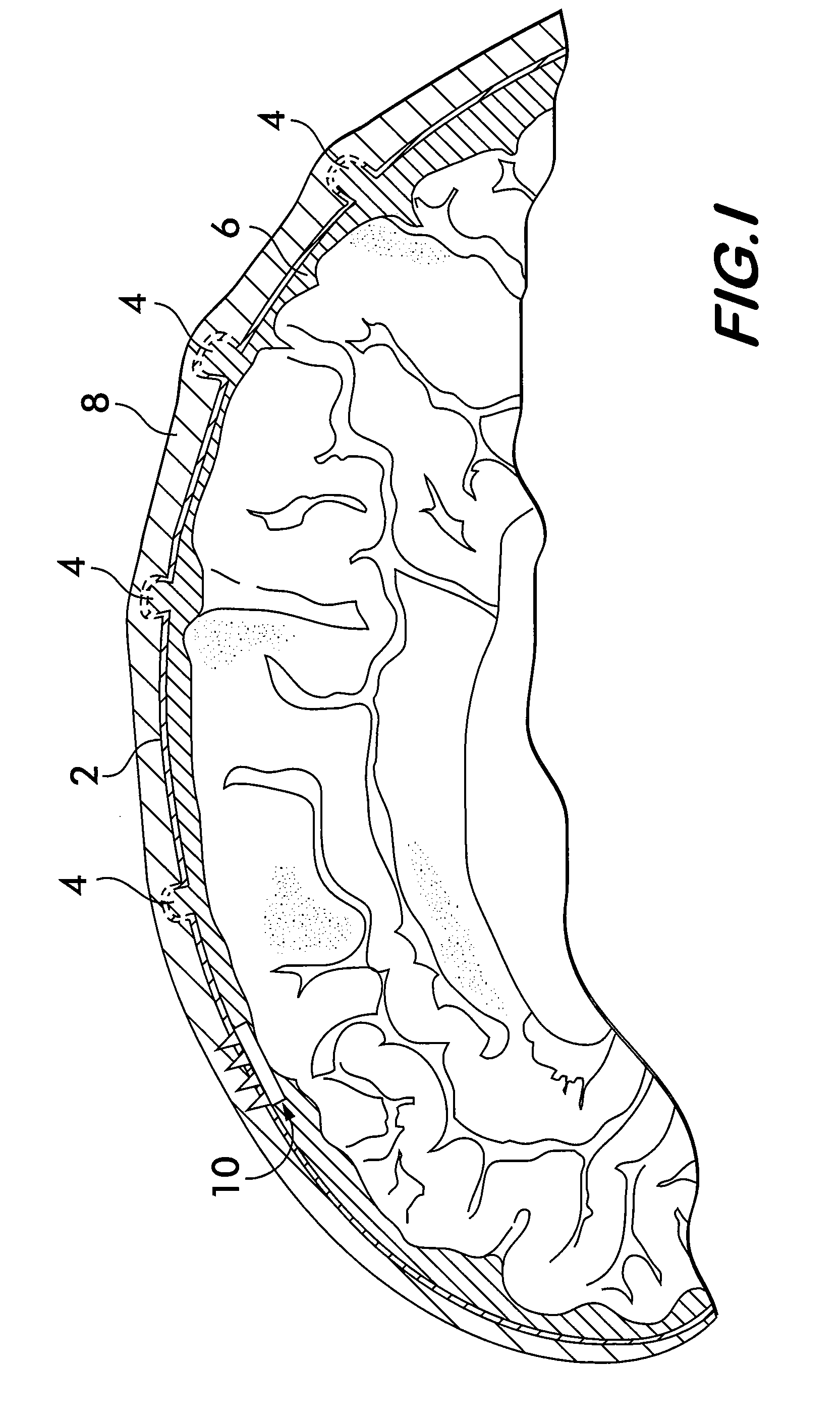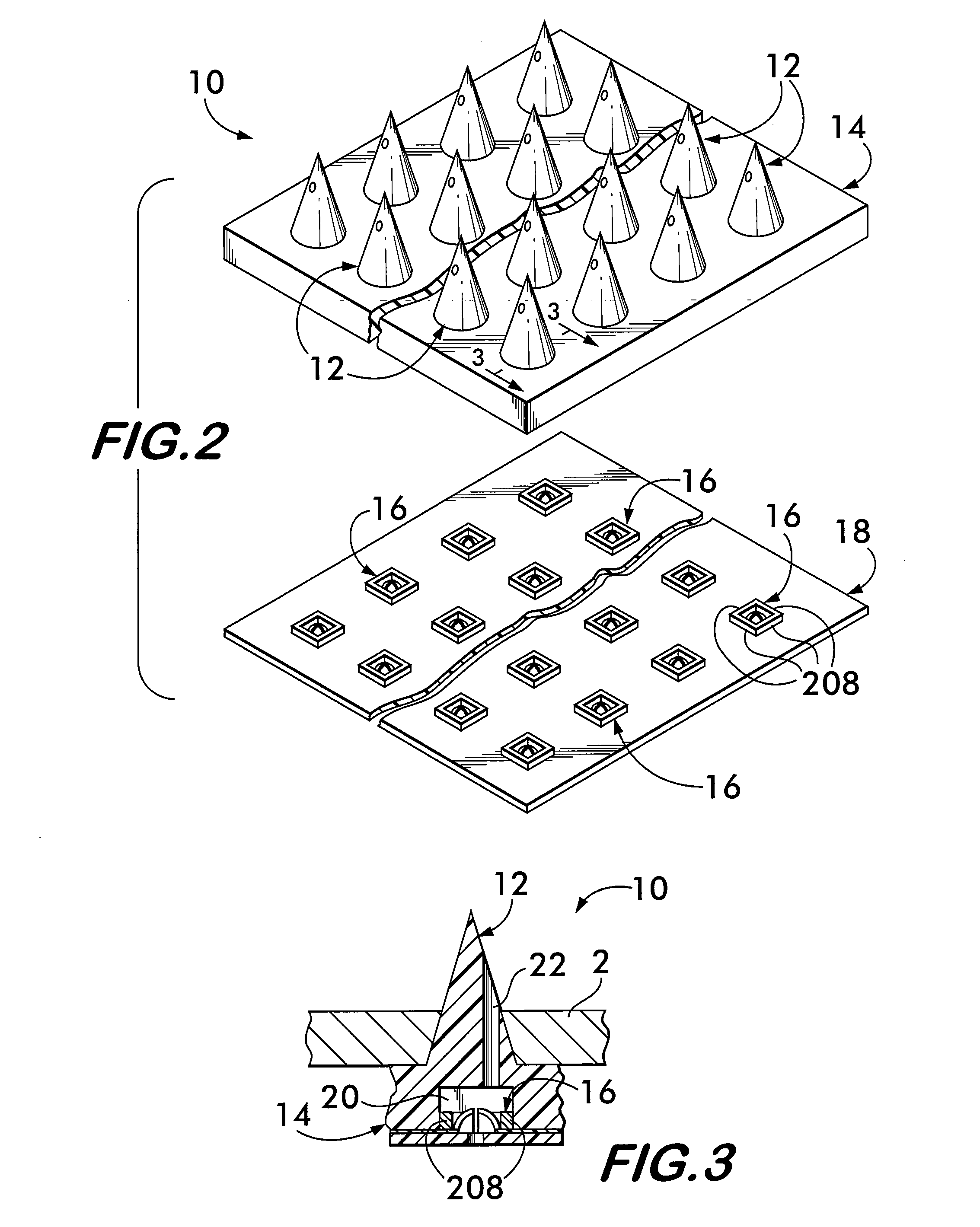Implantable micro-system for treatment of hydrocephalus
a micro-system and hydrocephalus technology, applied in the direction of micro-needles, infusion needles, valve arrangements, etc., can solve the problems of vp shunt current, high failure rate, 50% of mechanical shunt failure is due to shunt blockage, etc., to prevent an excessive pressure build-up
- Summary
- Abstract
- Description
- Claims
- Application Information
AI Technical Summary
Benefits of technology
Problems solved by technology
Method used
Image
Examples
Embodiment Construction
[0027]The invention will be illustrated in more detail with reference to the following Examples, but it should be understood that the present invention is not deemed to be limited thereto.
[0028]CSF is produced in the brain (choroid plexus and ependymal lining of the ventricular space) at a rate of approximately 0.3-0.5 ml / minute. The average volume of intracranial CSF is 125 ml. The total volume of CSF is turned over 3-4 times in a 24 hour period [Pediatric Neurosurgery at the Univ. of Adelaide]. The production and absorption of CSF is therefore in a dynamic equilibrium. Although there is some controversy as to the exact mechanism by which CSF absorption takes place to thereby maintain a desired pressure level within the subarachnoid area, it is most widely held that the primary route for maintaining equilibrium is the result of CSF being permitted to move into the sinus through arachnoid granulations that pierce the dura mater of the sinus.
[0029]Specifically, the CSF pressure in th...
PUM
 Login to View More
Login to View More Abstract
Description
Claims
Application Information
 Login to View More
Login to View More - R&D
- Intellectual Property
- Life Sciences
- Materials
- Tech Scout
- Unparalleled Data Quality
- Higher Quality Content
- 60% Fewer Hallucinations
Browse by: Latest US Patents, China's latest patents, Technical Efficacy Thesaurus, Application Domain, Technology Topic, Popular Technical Reports.
© 2025 PatSnap. All rights reserved.Legal|Privacy policy|Modern Slavery Act Transparency Statement|Sitemap|About US| Contact US: help@patsnap.com



